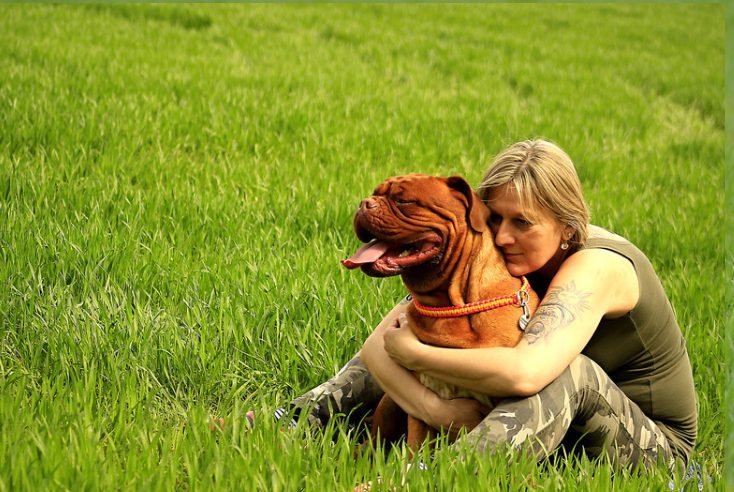
The Dogue de Bordeaux, also known as the French Mastiff, is a remarkable breed renowned for its strength, loyalty, and distinctive appearance. Originating from the Bordeaux region of France, this breed has a rich history and is celebrated for its protective nature and affectionate demeanor.
🏛️ History of the Dogue de Bordeaux

The Dogue de Bordeaux’s lineage dates back to at least the 14th century in France. Historically, these dogs were utilized for various purposes, including guarding estates, hunting large game, and even participating in bull-baiting—a practice now outlawed. Their versatility and strength made them invaluable to their owners. The breed faced near extinction during the French Revolution due to its association with the aristocracy. However, in the 1960s, Raymond Triquet initiated a breeding program that revived the breed, ensuring its survival for future generations.
📏 Size and Appearance

- Height:
- Males: 23.5 to 27 inches
- Females: 23 to 26 inches
- Weight:
- Males: 110 to 150 pounds
- Females: 99 to 130 pounds
- Coat: Short, fine, and soft to the touch.
- Color: Shades of fawn, from light tan to dark mahogany; a rich coat color is desirable.
- Distinctive Features: Large, square-shaped head with deep wrinkles and a muscular build.
One of the most striking characteristics of the Dogue de Bordeaux is its massive head, which boasts the largest head-to-body ratio of any dog breed. Their expressive eyes and wrinkled faces add to their unique and dignified appearance.
🐶 Lifespan and Health

- Average Lifespan: Approximately 11.1 years.
While the Dogue de Bordeaux is generally a healthy breed, they are prone to certain health issues, including:
- Hip Dysplasia: A genetic condition where the hip joint doesn’t develop properly, leading to arthritis.
- Brachycephalic Syndrome: Due to their short snouts, they may experience breathing difficulties.
- Demodicosis: A skin condition caused by mites, leading to hair loss and skin irritation.
- Footpad Hyperkeratosis: Thickening of the footpads, which can cause discomfort.
🍽️ Diet and Nutrition
As a large breed, the Dogue de Bordeaux requires a balanced diet to support its size and energy levels. It’s essential to provide high-quality dog food that is age-appropriate. Be mindful of portion sizes to prevent obesity, and consider feeding smaller, more frequent meals to reduce the risk of bloating.
🧼 Grooming and Care
The grooming needs of the Dogue de Bordeaux are relatively straightforward:
- Brushing: Once or twice a week to remove loose hair and reduce shedding.
- Skin Folds: Regular cleaning and drying of facial folds to prevent skin infections.
- Bathing: Every 1.5 to 2 weeks to maintain cleanliness and manage odor.
- Ear Care: Check ears regularly for debris or signs of infection.
- Nail Trimming: Approximately once a month.
🐾 Puppies and Training

Dogue de Bordeaux puppies are known for their playful and curious nature. Early socialization and obedience training are crucial to ensure they grow into well-mannered adults. Due to their strong-willed temperament, consistent and positive reinforcement methods work best. It’s important to establish leadership early on, as they require a confident and calm owner to thrive.
🏡 Ideal Living Environment

While the Dogue de Bordeaux can adapt to various living situations, they thrive in homes where they are not left alone for extended periods. They are best suited for families with older children due to their size and strength. Regular exercise is essential, but care should be taken to avoid high-impact activities until they are fully grown to prevent joint issues.
🎬 Fun Fact

A Dogue de Bordeaux named “Beasley” portrayed the lovable yet slobbery “Hooch” in the 1989 film Turner & Hooch, starring Tom Hanks. This role significantly boosted the breed’s popularity worldwide.
🐕 Conclusion

The Dogue de Bordeaux is a majestic and loyal companion, known for its protective instincts and affectionate nature. With proper care, training, and attention, this breed can make a wonderful addition to the right family. Their rich history and unique characteristics continue to endear them to dog enthusiasts around the world.

Leave a Reply